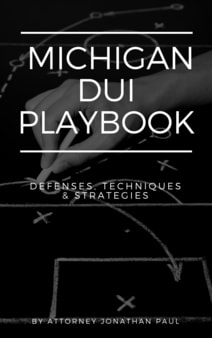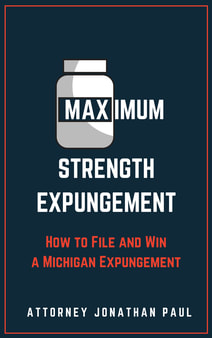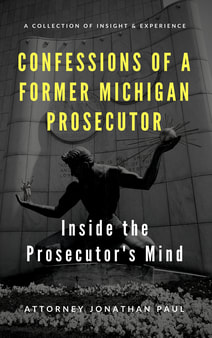Name: David
Age: 55 years old
DUI from 20 years ago on record
Profession: Consultant
I get an early morning voicemail from David, who has just been released from custody. He informs me that he was arrested for domestic violence and is now staying with his brother. He was told not to return to his home with his wife and kids. David is scared and has a piece of paper with a court date and a list of bond conditions. He wants to talk and find out what the next steps for his case would be with an attorney.
After reviewing this information, I reach back out to David to learn more about his background, the case, and some goals for the case.
David tells me that the incident involved his wife who he has been married to for 28 years, they have two children, and he has not had any issues with the law since he was much younger; I clarify when and what is in his past, and he tells me an old DUI from about 20 years ago.
David is a consultant to travels often and is the main financial support for his family; he is worried that his wife may divorce him, and he won’t be able to see his teenage children.
We then discuss what exactly happened; David is honest and says he drank way too much, and he got into a verbal fight with his wife about him not being home enough, and she suspected he was cheating on her while traveling during the week. Eventually this led to his wife swinging violently at him, yelling, and David reacted by shoving her against the wall, which caused her to hit her head. One of the teenage children called the police, and he was arrested.
David is extremely apologetic about his actions, and admits that without drinking, this would not have escalated to violence. He didn’t mean to hurt his wife, but she would not stop swinging at him, and he didn’t know what to do. He is worried about international travel and his job with a domestic violence offense on his record.
It’s very common for clients to assume that if the “victim” wants to drop the case, that it can just go away. For the most part, this is NOT true. A prosecutor prosecutes a case on behalf of their city, town, village or county, not on behalf of the victim; even if the person alleged harmed wants the case to go away, that is not their decision.
I ask David to send me the bond conditions which he was provided, and we go over what the no-contact order means. He must not return to his home, and cannot have any contact with his wife, even via third party. There is nothing on the no-contact order about his children, so he would be able to reach out to them and arrange to see them and talk to them.
David is ok staying with his brother on a temporary basis, but is curious about when he can go home, and I explain that it’s a process, and it’s not happening just yet.
I explain to David how a judge and prosecutor view his case. In his mind, he drank too much, he took it one step too far, but this has never happened again, his wife ended up being shook up, but unharmed, and he is extremely remorseful. It’s easy to think that this can blow over and move on with better intentions.
The prosecutor and judge know nothing about David, and do not take the same approach. They will assume that David is a drunk, a dangerous man, and his violence threatens his family if he returns to the home.
They can see his part DUI history, and while not directly related to domestic violence, it is a history of alcohol and breaking the law. It doesn’t help our case that in the police report, David blew a 0.19 BAC on a PBT while in police custody.
David, and I begin to work together, and I file my documents with the court, police and prosecutor so we can receive police reports, statements and any audio, and video. We also want to confirm the first court date, and open lines of communication with the prosecutor.
Once we receive the police reports, we are also provided a copy of a 911 call, which captures some audio from the incident, as one of the teenagers was calling the police on David.
In the 911 call, you can hear the teenager fearful that his dad was going to hurt his mom. More alarming, David threatening to kill his wife; something that David, and myself agree was the alcohol and his frustration peaking, and not his true thoughts or intentions, but again, the prosecutor and judge are going to think very different of these words.
While David maintains that the motivation for pushing his wife was her swinging her arms at him, I explain that the only way to present that theory of the case is at a trial, and that option is on the table, but we need to explore other means of resolution.
Because of his documented intoxication, the teenager calling to report dad as the offender, and the audio of the death threat for any jury or judge to hear, it’s not exactly the best case to try in court. David agrees that an alternative resolution may be in his best interest.
I explain that any favorable resolution would need to be approved by a prosecutor, the judge, and most importantly his wife. He is confident that she would be open to working toward a suitable outcome if presented to her. I explain that the prosecutor will likely use a victim advocate to learn of her wishes, and her position on any outcome.
While we have a solid roadmap in place, we now have a lot of work to do in order to change the perception of David’s case. A superior outcome is a longshot if we do nothing proactively.
David sees the value in beginning a series of proactive steps on my program. Because of the documented alcohol in David’s system, he has been ordered to do random alcohol testing as part of his bond, and we discuss how to comply, but we agree to go above and beyond and begin using a portable breath testing machine. We agree that it’s our goal to have the court adopt our more aggressive testing, but for now, he will do both.
We want to show the judge and prosecutor that alcohol is not an underlying issue for David despite his past from 20 years ago. When told not to drink, he can comply, and he is not a threat to get drunk again and hurt someone he loves.
We also agree to begin a proactive program geared toward domestic violence cases, because David admits that he handled the situation poorly, and can certainly learn valuable lessons in deescalating situations; he wants to work on himself, because he’s been drinking more than usual, working long hours, and very stressed.
His actions don’t reflect how much he loves and respects his wife and children, but his underlying stress and drinking turned him into something he doesn’t want to become that evening. If that’s the worst incident that happens between him and his wife the rest of his life, he will be grateful, but he admits he needs help, because when he drinks, he can be someone he doesn’t want to be.
David is grateful to begin a program with specialized counseling, which incorporates a substance abuse component. I also advise David that I want him to go to a few AA meetings, and get a sense of how alcohol has impacted others.
It’s more educational at this point, because I want David to hear from the people who have lost careers, been divorced, lost respect of friends and family because of their drinking.
David also agrees that his actions caused a domino effect of public resources with the police, jail, prosecutor, court and judge all touching his case, because of his poor choice. He believes doing a few days of community service in the same city as his case would be a way to begin to counteract what happened and put positive vibes and energy back into the system.
Within 24 hours of this terrible and regrettable incident, we now have a realistic set of goals to keep domestic violence off his record, avoid jail time, and help him learn from this incident, and be a better husband and father.
We embrace that this happened for a reason; nobody was seriously hurt, and we can turn this into a manageable situation. David understood that words, promises and best intentions don’t move the needle, and agreed to a comprehensive proactive approach to the problem.
We are now addressing the alcohol concerns, the conflict resolution and therapeutic issues, and counteracting breaking the law, by giving back valuable time and resources to the same community.
Imagine if David didn’t agree to all of this? That’s what 99.9 percent of people who are charged with domestic violence do every single day in Michigan. They allow the four corners of the police report to define them, and not a single thing changes when they go to court.
David is now on the path to creating a “true impression” of who he is, and where he plans to go in the future with the lessons learned from this case. He is in an excellent position to reach all of his goals, and return home to his family.
Age: 55 years old
DUI from 20 years ago on record
Profession: Consultant
I get an early morning voicemail from David, who has just been released from custody. He informs me that he was arrested for domestic violence and is now staying with his brother. He was told not to return to his home with his wife and kids. David is scared and has a piece of paper with a court date and a list of bond conditions. He wants to talk and find out what the next steps for his case would be with an attorney.
After reviewing this information, I reach back out to David to learn more about his background, the case, and some goals for the case.
David tells me that the incident involved his wife who he has been married to for 28 years, they have two children, and he has not had any issues with the law since he was much younger; I clarify when and what is in his past, and he tells me an old DUI from about 20 years ago.
David is a consultant to travels often and is the main financial support for his family; he is worried that his wife may divorce him, and he won’t be able to see his teenage children.
We then discuss what exactly happened; David is honest and says he drank way too much, and he got into a verbal fight with his wife about him not being home enough, and she suspected he was cheating on her while traveling during the week. Eventually this led to his wife swinging violently at him, yelling, and David reacted by shoving her against the wall, which caused her to hit her head. One of the teenage children called the police, and he was arrested.
David is extremely apologetic about his actions, and admits that without drinking, this would not have escalated to violence. He didn’t mean to hurt his wife, but she would not stop swinging at him, and he didn’t know what to do. He is worried about international travel and his job with a domestic violence offense on his record.
It’s very common for clients to assume that if the “victim” wants to drop the case, that it can just go away. For the most part, this is NOT true. A prosecutor prosecutes a case on behalf of their city, town, village or county, not on behalf of the victim; even if the person alleged harmed wants the case to go away, that is not their decision.
I ask David to send me the bond conditions which he was provided, and we go over what the no-contact order means. He must not return to his home, and cannot have any contact with his wife, even via third party. There is nothing on the no-contact order about his children, so he would be able to reach out to them and arrange to see them and talk to them.
David is ok staying with his brother on a temporary basis, but is curious about when he can go home, and I explain that it’s a process, and it’s not happening just yet.
I explain to David how a judge and prosecutor view his case. In his mind, he drank too much, he took it one step too far, but this has never happened again, his wife ended up being shook up, but unharmed, and he is extremely remorseful. It’s easy to think that this can blow over and move on with better intentions.
The prosecutor and judge know nothing about David, and do not take the same approach. They will assume that David is a drunk, a dangerous man, and his violence threatens his family if he returns to the home.
They can see his part DUI history, and while not directly related to domestic violence, it is a history of alcohol and breaking the law. It doesn’t help our case that in the police report, David blew a 0.19 BAC on a PBT while in police custody.
David, and I begin to work together, and I file my documents with the court, police and prosecutor so we can receive police reports, statements and any audio, and video. We also want to confirm the first court date, and open lines of communication with the prosecutor.
Once we receive the police reports, we are also provided a copy of a 911 call, which captures some audio from the incident, as one of the teenagers was calling the police on David.
In the 911 call, you can hear the teenager fearful that his dad was going to hurt his mom. More alarming, David threatening to kill his wife; something that David, and myself agree was the alcohol and his frustration peaking, and not his true thoughts or intentions, but again, the prosecutor and judge are going to think very different of these words.
While David maintains that the motivation for pushing his wife was her swinging her arms at him, I explain that the only way to present that theory of the case is at a trial, and that option is on the table, but we need to explore other means of resolution.
Because of his documented intoxication, the teenager calling to report dad as the offender, and the audio of the death threat for any jury or judge to hear, it’s not exactly the best case to try in court. David agrees that an alternative resolution may be in his best interest.
I explain that any favorable resolution would need to be approved by a prosecutor, the judge, and most importantly his wife. He is confident that she would be open to working toward a suitable outcome if presented to her. I explain that the prosecutor will likely use a victim advocate to learn of her wishes, and her position on any outcome.
While we have a solid roadmap in place, we now have a lot of work to do in order to change the perception of David’s case. A superior outcome is a longshot if we do nothing proactively.
David sees the value in beginning a series of proactive steps on my program. Because of the documented alcohol in David’s system, he has been ordered to do random alcohol testing as part of his bond, and we discuss how to comply, but we agree to go above and beyond and begin using a portable breath testing machine. We agree that it’s our goal to have the court adopt our more aggressive testing, but for now, he will do both.
We want to show the judge and prosecutor that alcohol is not an underlying issue for David despite his past from 20 years ago. When told not to drink, he can comply, and he is not a threat to get drunk again and hurt someone he loves.
We also agree to begin a proactive program geared toward domestic violence cases, because David admits that he handled the situation poorly, and can certainly learn valuable lessons in deescalating situations; he wants to work on himself, because he’s been drinking more than usual, working long hours, and very stressed.
His actions don’t reflect how much he loves and respects his wife and children, but his underlying stress and drinking turned him into something he doesn’t want to become that evening. If that’s the worst incident that happens between him and his wife the rest of his life, he will be grateful, but he admits he needs help, because when he drinks, he can be someone he doesn’t want to be.
David is grateful to begin a program with specialized counseling, which incorporates a substance abuse component. I also advise David that I want him to go to a few AA meetings, and get a sense of how alcohol has impacted others.
It’s more educational at this point, because I want David to hear from the people who have lost careers, been divorced, lost respect of friends and family because of their drinking.
David also agrees that his actions caused a domino effect of public resources with the police, jail, prosecutor, court and judge all touching his case, because of his poor choice. He believes doing a few days of community service in the same city as his case would be a way to begin to counteract what happened and put positive vibes and energy back into the system.
Within 24 hours of this terrible and regrettable incident, we now have a realistic set of goals to keep domestic violence off his record, avoid jail time, and help him learn from this incident, and be a better husband and father.
We embrace that this happened for a reason; nobody was seriously hurt, and we can turn this into a manageable situation. David understood that words, promises and best intentions don’t move the needle, and agreed to a comprehensive proactive approach to the problem.
We are now addressing the alcohol concerns, the conflict resolution and therapeutic issues, and counteracting breaking the law, by giving back valuable time and resources to the same community.
Imagine if David didn’t agree to all of this? That’s what 99.9 percent of people who are charged with domestic violence do every single day in Michigan. They allow the four corners of the police report to define them, and not a single thing changes when they go to court.
David is now on the path to creating a “true impression” of who he is, and where he plans to go in the future with the lessons learned from this case. He is in an excellent position to reach all of his goals, and return home to his family.








